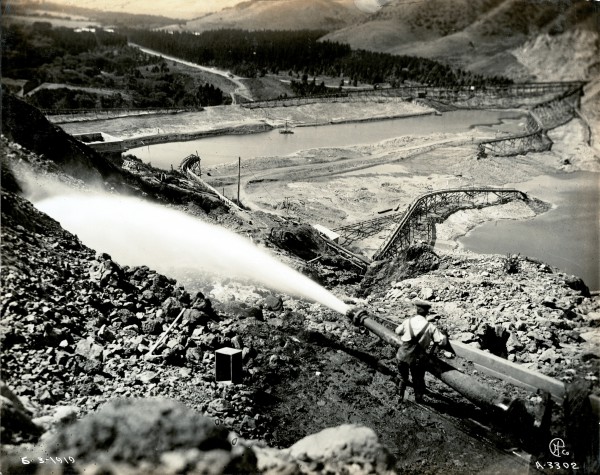Gold Rush: 1848–1860: Mining Techniques

 Click image to zoom in.
Click image to zoom in.Or view larger version. Miner using hydraulic hose to clear land while mining for gold. June 3, 1919. Unknown photographer. Gelatin silver print. Collection of Oakland Museum of California.
This photograph shows a miner, directing a hydraulic hose at the side of a mountain. Hydraulic mining was first developed in 1853, and implemented as a means of sifting through rocks and sediment to find traces of gold ore. The usual application was to construct paths and canals that would move water from the higher mountain ranges, and store the collected water in ponds located several hundred feet above the area that was to be mined. The water would be directed from the pond into a channel that would narrow as the flow of water moved closer to the mining area, thereby building up pressure.